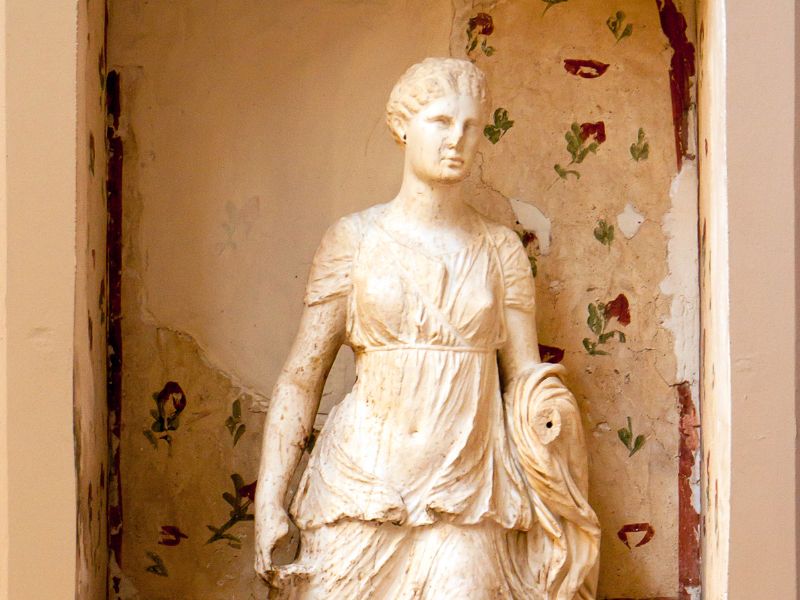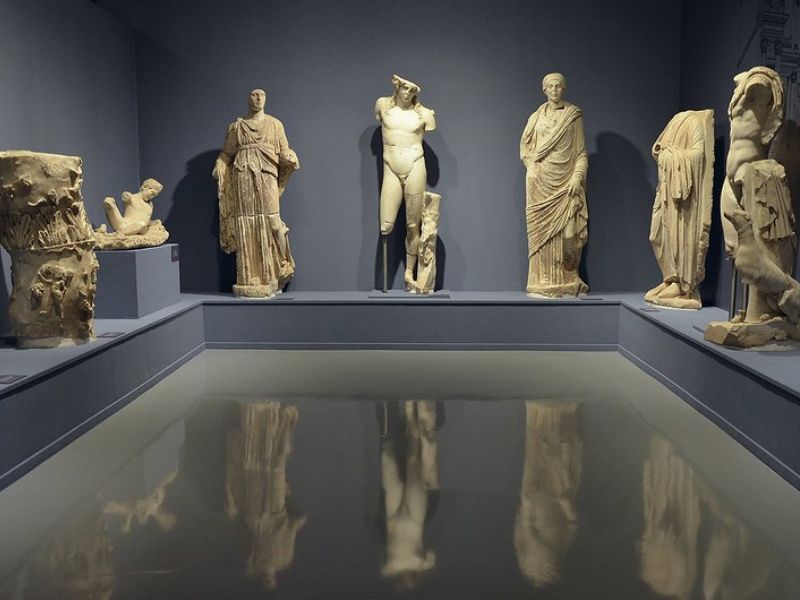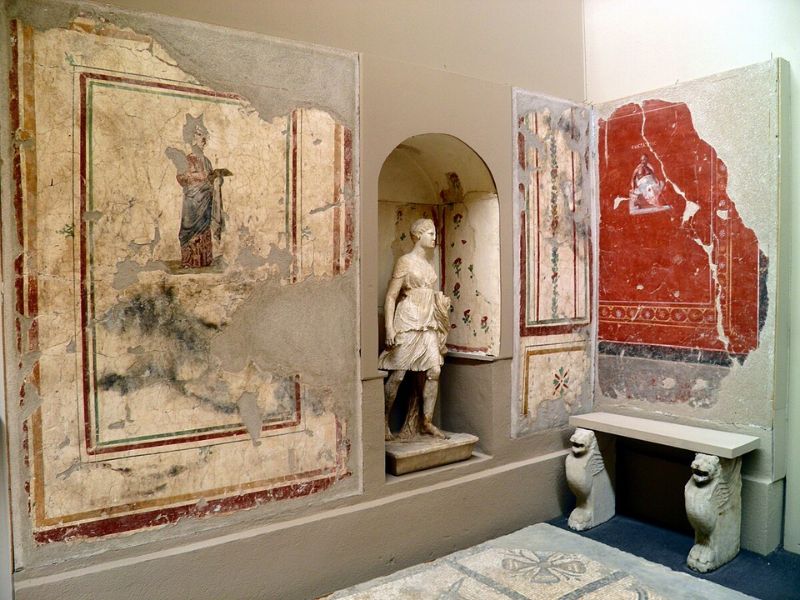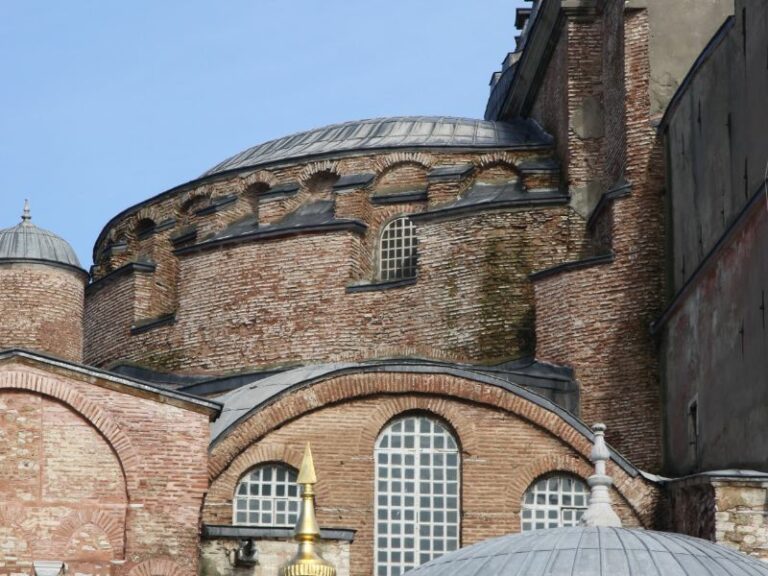Introduction
The Ephesus Archaeological Museum, located in the heart of Selçuk, Turkey, stands as a monumental repository of ancient artefacts, offering an unparalleled glimpse into the storied past of the Ephesus region. This museum provides an educational journey through millennia, showcasing relics from the Hellenistic, Roman, and early Christian periods.
With meticulously curated exhibits, the Ephesus Archaeological Museum not only illuminates the grandeur of ancient civilizations but also serves as an essential resource for historians, archaeologists, and cultural enthusiasts. This exploration into the depths of history promises both an engaging and intellectually enriching experience.
Historical Context
Ephesus, an ancient city founded by the Greeks, later rose to prominence under Roman rule. Known for its grand temples, bustling marketplaces, and intricate architecture, Ephesus was a center of commerce and culture.
The city’s ruins are a testament to its rich history, with structures such as the Library of Celsus, the Great Theatre, and the Temple of Artemis still captivating visitors. The archaeological endeavors in Ephesus began in 1867, and over the decades, numerous artifacts were unearthed, many of which are now housed in the Ephesus Archaeological Museum.
The Ephesus Archaeological Museum: A Repository of Ancient Marvels
Established in 1964, the Ephesus Archaeological Museum was founded with a mission to preserve and display the archeological treasures unearthed from the Ephesus region and its environs.
The impetus for establishing the museum arose with the founding of the New Turkish Republic, which prohibited the export of ancient artifacts and mandated the return of items taken abroad.
Artifacts discovered between 1867 and 1905, which had been transported to the British Museum, and those found from 1905 to 1923, which had been taken to Vienna, were reclaimed and are now part of the museum’s extensive collection.
Not only does the museum house finds from the ongoing excavations at Ephesus, but it also includes remarkable relics from the Çukuriçi Mound, the Basilica of St. John, and the Temple of Artemis.
The museum uniquely eschews chronological displays, opting instead to organize its galleries thematically.
Visitors can explore an array of sections, including sculptures from the fountains, finds from the Terrace Houses, numismatic displays, and ‘Ephesus through the Ages.’ Each gallery is meticulously curated to provide thematic cohesion and contextual depth.
Key Exhibits

The Ephesus Archaeological Museum is distinct in its thematic arrangement, allowing visitors to engage deeply with each category of artifacts. Here are some notable highlights:
The Hall of the Residential Relics
Ivory Frieze from Terrace Houses: This exquisite piece showcases the artistic brilliance of Ephesus craftsmen.
Socrates Room & Floor Mosaics from Terrace Houses: Intricate mosaics that adorned the homes of the affluent.
Frescos from Terrace Houses: Beautiful frescoes capturing the essence of domestic life in ancient Ephesus.
The Hall of the Fountain Relics
Bust of Zeus: A magnificent representation of the king of gods.
Statue of Aphrodite: Captivating statue of the goddess of love and beauty.
Sculpture of the Sea God Triton: Reflects the maritime culture and mythology of the era.
Statue of the Resting Warrior: Depicts the valor and vitality of ancient warriors.
Polyphemus Group: A fascinating ensemble of mythological figures.
Statues from the Fountain of Trajan: Includes Young Dionysus, Satyr, Androklos with his dog, and Aphrodite.
Statues from the Fountain of Laecanius Bassus: Featuring Triton and Nymphs.
Bust of a Warrior: An evocative piece symbolizing strength and courage.
The Hall of the Recent Finds
Bronze Crosses, Off-white Glazed Bowls, and Fragment of an Icon made of Soapstone: Artifacts reflecting the religious and everyday life of Ephesus inhabitants.
Coins of Ephesus: A collection showcasing the evolution of currency.
Blue Glass Tray and Baked Clay Wine Cups: Examples of ancient craftsmanship.
Bronze Serpent and Statues of Eros: Artistic pieces portraying mythological themes.
Oil Lamp Collection: Illustrates the lighting methods used in ancient times.
Bust of Emperor Marcus Aurelius: A striking depiction of the Roman emperor.
Masks from the Theatre of Ephesus: Providing insights into ancient theatrical practices.
The Courtyard – Stone Artifacts
Pediment from the Temple of Augustus: An architectural marvel.
Sundial from the reign of Emperor Caracalla: Showcasing the advancements in timekeeping.
Column Capitals: Chronologically ordered, these capitals offer a visual timeline of architectural evolution.
Dedicatory and Grave Steles: Reflecting the commemorative practices of the period.
Well-preserved Sarcophagus with Muses and Belevi Sarcophagus: Exquisite burial artifacts.
Inscription of 152 lines: Detailing customs regulations from the reign of Emperor Nero.
The Hall of the Funerary Relics
Mycenaean Grave Gifts and Klazomenai-type Sarcophagus: Highlighting burial traditions.
Objects from the Cave of the Seven Sleepers and Phoenician Glassware: Artifacts with intriguing backstories.
Bracelets from the Byzantine era and Statue of Cybele: Reflecting the cultural influences over centuries.
Cybele, Attis, and Zeus Steles: Steles commemorating deities.
The Hall of Artemis
Statues of the Great Artemis and the Beautiful Artemis: Representations of one of the most significant deities worshipped in Ephesus.
Small Statue of Artemis and Torso of Artemis: Smaller but equally significant relics.
Gold Statue of a Goddess and Ivory Statuette of a Ram: Exquisite artifacts showcasing the opulence of ancient Ephesus.
Statue of a Horse (from a quadriga): A remarkable piece depicting Ephesians’ affinity for chariots.
The Hall of the Imperial Cults and Portraits
Portraits of Roman Emperors and Statue of Proconsul Stephanos: Reflecting the imperial influence over Ephesus.
Frieze from the Temple of Hadrian: An architectural masterpiece.
Statues of Emperor Augustus and his wife Livia: A testament to the prominence of Augustus.
Altar of the Temple of Domitian: An evocative piece illustrating the religious practices.
The Museum’s Role in Ephesus Itineraries
The Ephesus Archaeological Museum serves as an integral part of the Ephesus experience. It provides context and deeper insights into the artifacts and structures found at the archaeological site. Visitors can appreciate the intricacies of the ruins they explore, enriching their understanding of ancient life.
The museum is often the starting point for many visitors, setting the stage for the archaeological adventure ahead.
Relocation of Artifacts
Between 1867 and 1923, many artifacts from Ephesus were transported to museums in Europe, particularly to the British Museum and the Museum of Vienna.
However, with the establishment of the Turkish Republic, a concerted effort was made to repatriate these artifacts. Today, the Ephesus Archaeological Museum proudly houses many of these returned treasures, ensuring they remain part of Turkey’s rich cultural heritage.
Visitor Tips
To make the most of your visit to the Ephesus Archaeological Museum, consider the following tips:
- Timing: Plan your visit early in the day to avoid crowds and have a more immersive experience.
- Guided Tours: Opt for guided tours to gain detailed insights and historical context.
- 3D Simulation Video: Don’t miss the 10-minute 3D simulation video of ancient Ephesus, available in Turkish, English, and German. It provides a vivid visualization of the ancient city.
- Museum Shop and Café: Take some time to explore the museum shop for unique souvenirs and enjoy a refreshment at the café.
Conclusion
The Ephesus Archaeological Museum offers a unique journey through ancient civilization with a rich collection of artifacts that showcase the daily lives, religious practices, and artistry of the ancient Ephesians. Highlights include intricate mosaics, evocative statues, and exquisite burial items.




